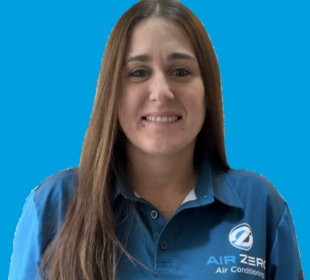As winter gives way to spring, the days get longer and warmer. The change in season makes things different for your home’s HVAC system. Proper transition and maintenance can improve your system’s efficiency, keep your home comfortable, and extend the longevity of your hardware. However, neglecting the transition might result in reduced air quality, higher energy costs, and possible system breakdowns. If you want to successfully transition your home’s HVAC from winter to spring, follow these steps.
Changing Air Filters
Replacing your home’s air filters is perhaps the simplest step you take when transitioning your HVAC system from winter to spring; it’s also one of the most effective things you can do. During the winter, your HVAC system can accumulate allergens, dirt, and dust in your filters. As the filters clog, airflow becomes restricted. This results in more work for your system, and it uses more energy. In most homes, the filter is behind the blower compartment or return air duct. Check the filter size before you buy a replacement so you can ensure a proper match. Remove the older filter before putting the new one in place and verifying its proper positioning.
Air Duct Inspection and Cleaning
Winter HVAC operations don’t just accumulate dust and debris on your air filters, as they also gather in your ducts. Airflow is reduced, and your indoor air quality worsens. Cleaning the ducts prior to spring maintains optimal efficiency and can help stop allergens from circulating throughout your home. Look for visible signs of pests, mold, or dust in your vents, and contact a professional who can look deeper into the ductwork than you can. They can also clean them out thoroughly beyond the grates, vents, and registers you can access.
Thermostat Setting Adjustments
Winter weather can mean running the heating part of your HVAC system. It might not be as necessary or frequent in warmer climates, but it is still an occasional necessity. At some point, the rising spring temperatures make you adjust your thermostat from heating to cooling. A gradual transition helps your system adapt without undue strain. The temperature you use for winter heating might not be the same as what you set your air conditioning at, but smart or programmable thermostats can automatically adjust temperatures based on household schedules.
Outdoor Unit Cleaning
Many HVAC systems have an air conditioning condenser as an outdoor unit where it is susceptible to debris, including twigs, dirt, and leaves, during the winter. Cleaning this unit can improve cooling efficiency and maintain proper airflow. Basic cleaning on and around the unit should be part of your regular landscaping, but detailed cleaning, especially inside the unit, should be left to a professional technician. Remove debris you find around the unit, and make sure there’s always a minimum of 2 ft. of clearance surrounding the unit for sufficient airflow. If you decide to use your garden hose to wash dirt off the coils, do so gently and only after turning the unit’s power supply off.
The Condensate Drain Line
Air conditioning cools your home by removing moisture from the inside rooms, but the system itself relies on the condensate drain line to get moisture out of the home. With the passage of time, this line can get clogged due to mold, algae, or dirt; the results can range from water leaks to entire system malfunctions. You should be able to locate the drain line close to the indoor air handler. A wet-dry vacuum can remove blockages. Prevent future clogs by pouring a mix of water and vinegar down the drain line or schedule a technician visit for professional service.
Sealing Doors and Windows
Sealing air leaks improves the indoor comfort of everyone you live with, but it also makes your home’s energy efficiency higher; that should save you money on your utility bills. Proper insulation helps indoor temperatures remain stable, and your HVAC system doesn’t have to work as hard. Look for leaks or gaps around your doors and windows where cool air might escape during the warmer spring and summer months. Apply weatherstripping where it might help, and hang thermal curtains on your windows to keep out heat when the sun is up. Inspect your home’s insulation for any worn areas, and replace it or add weatherstripping to fill in the gaps.
Air Conditioner Testing
When the temperatures start to rise, you’ll have to decide when to turn the AC on. Before you reach that point, it’s smart to test the system and make sure it’s functioning properly. Set the thermostat for cooling mode, and pick a temperature lower than the current room condition so the system activates. Let everything run for a few moments. Listen for unusual noises, and check your vents for weak airflow. Keep an eye on the temperature to make sure the system is cooling your home down. If you notice any unusual sounds or feel warm air blowing, contact your HVAC professional at Air Zero for a more detailed inspection.
A Professional Visit
Whether you test the system yourself or not, a seasonal visit by an HVAC technician is one of the best transitional moves you can make between seasons. A professional inspection can detect possible issues before they result in expensive repairs and make sure your system is ready for the increased demand in the coming warmer weather. The technician will inspect and clean the evaporator coils, check refrigerant levels, and search for leaks. They’ll lubricate the moving parts to minimize wear and tear while also testing electrical components and connections for performance and fit. An evaluation of overall system performance will tell you if your HVAC system is ready for spring and summer duty or if you need repairs or an upgrade.
Energy-Efficient Upgrades
How old is your HVAC system? If it’s 10 to 15 years or more, an upgrade to more energy-efficient technology can improve the regular performance levels and provide long-term financial savings. Modern systems frequently have advanced features, including higher Seasonal Energy Efficiency Ratio ratings, smart thermostats, and variable speed motors. Improved efficiency might lower your energy bills, better filtration systems can enhance your indoor air quality, and your household can enjoy consistent temperature control and quieter operations. Your HVAC technician can help you determine whether it’s time for a system upgrade.
Making the Transition
It’s important to transition your home’s HVAC system from the winter season to spring if you want to reduce your energy costs, maintain a comfortable interior environment, and protect the system’s efficiency. Schedule professional maintenance, adjust your thermostat settings, and keep your air ducts and filters clean; taking these steps will keep your system running smoothly. Proactive measures now prevent breakdowns in the warmer months and extend the lifespan of the system components. Staying ahead of seasonal changes should mean a seamless transition into the sunnier days ahead.
Air Zero provides residents and commercial clients of Largo and the surrounding communities of Florida with HVAC and indoor air quality services, including installation, repairs, and maintenance. Contact Air Zero today for all your home’s HVAC needs.

